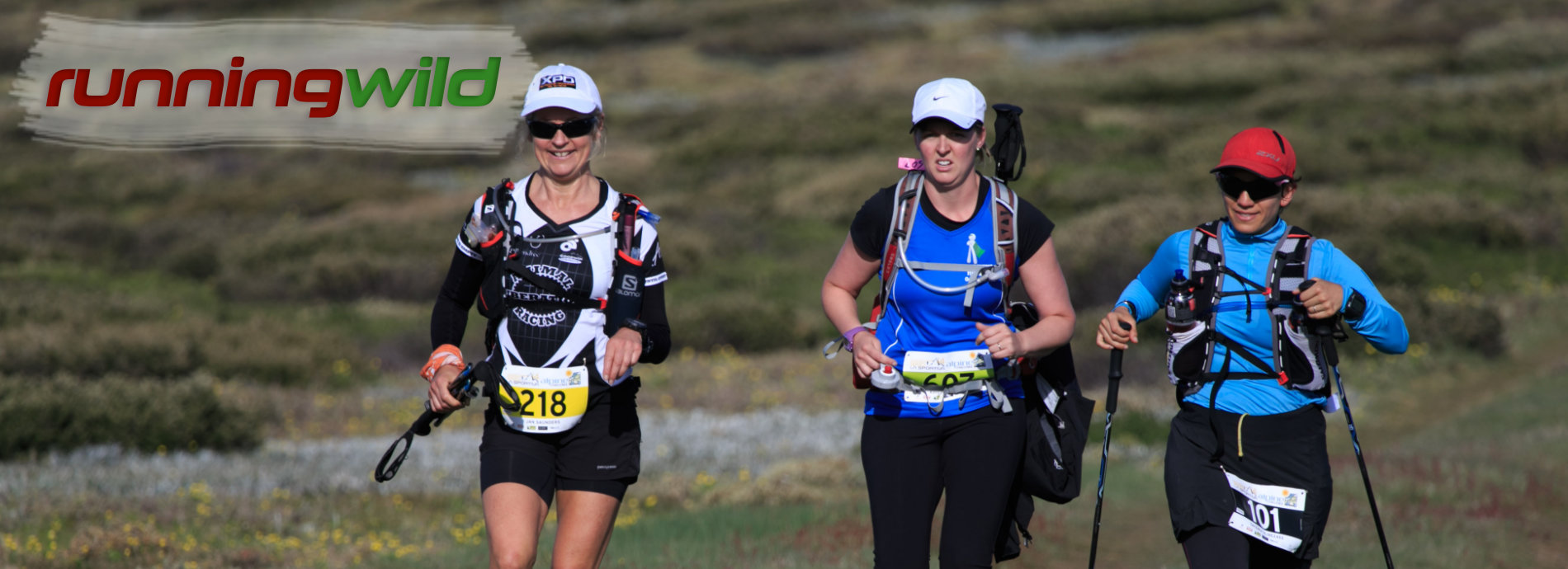There was a great sense of anticipation as we set off in the pre-dawn darkness, with only the silvery light of our torches to guide us towards the first big obstacle of the day.
Bungalow Spur is a 1,400m climb up a well-maintained walking trail that rises to the summit of Mt Feathertop. Warm weather in the weeks leading up to the event meant the trail was clear from snow and we made good time despite the punishing gradient, reaching the summit in time to witness a glorious sunrise. The view across to Mount Bogong was awe-inspiring, though also a little daunting in its revelation of the challenges that lay ahead.
From the summit of Feathertop, the course takes in the virtually unrunnable descent of Diamantina Spur, a nasty 3.2km drop into the West Kiewa Valley. On a previous reconnaissance trip this short leg had taken almost two hours in the snow and we were concerned it would be just as difficult to negotiate without any snow cover, given the scree and wet grasses at the bottom.
Despite our concerns, we emerged at the valley floor without incident after just over an hour of descent. From here we were able to enjoy a relatively flat stretch through the sun-drenched valley before hitting the next climb which took us past the burnt-out remains of Weston’s Hut and up onto the high plains and the first rendezvous with our support crew at Tawonga Hut.
On a run like this, an experienced support crew is a must for both physical and moral support. At this point we had already been on the move for close to seven hours and our crew had prepared a meal of soup and noodles to provide sustenance for the next leg of the journey, a 15km stretch to Bogong Village.
While this stretch appeared relatively easy on paper, for me it proved to be one of the most difficult sections as I fought a battle with nausea that made it almost impossible to hold down any food or fluid. For two hours I wrestled with the temptation to stop and it was only the thought of the people we were supporting that kept me going. Any mental challenges I was experiencing were nothing compared to the struggles faced by people experiencing mental illness every day of the year.
The arrival at Bogong Village is the 46km point and it also marks the beginning of the hardest and most exposed section of the run. Adding to the challenge is the fact that at this point we were forced to convert to larger packs containing sleeping bags, bivvy bags, and extra food and clothes for the 50km leg over the 1,986m summit of Victoria’s highest peak, Mount Bogong.
Whilst the initial plan had been to reach Cleve Cole Hut, for a night of relative luxury below the summit of Mt Bogong, it became clear that this would be unattainable given the time we had lost. The onset of darkness at Warby Corner further complicated matters and by the time we arrived at Big River for the first river crossing at 11pm, we succumbed to fatigue and made camp. Almost nineteen hours had passed since departing Harrietville.
After four hours of sleep, punctuated by attacks from hungry native mice we awoke to the unpleasant sight of the results of the mice attacks on our food supplies. A quick survey revealed the side of my pack had been chewed through and a good portion of my day’s rations eaten, along with a pair of socks! Not the best start to a tough day of running.
Day two began with the ascent of Mount Bogong, following the track up the T-Spur. Fortunately Parks Victoria had recently cleared the track of bush fire regrowth and we made swift progress by the light of our torches. As dawn broke, we were greeted with a view of white, fluffy clouds in the valley below. A golden glow slowly filled the horizon. It was another majestic dawning of a new day.
After a brief break at Cleve Cole Hut, we continued up towards the summit of Mount Bogong. Despite reduced visibility, thanks to the all-embracing mist that frequency shrouds the top of Victoria’s highest mountain, the track was clear and easy to follow and we had no difficulty navigating our way to the summit and more breathtaking views.
From the summit of Bogong the route descends down the Quartz Ridge. With sheer drops on one side of the path, this presents one of the more dangerous parts of the route, particularly given the accumulated fatigue occasioned by over 80 kilometres of running and we proceeded cautiously until we had descended below the treeline.
After reaching level ground we made good progress towards Big River for the second river crossing of the trip, before commencing the long ascent up the fire trail which climbs to Timms Lookout and on to Langford’s Gap, the 100km mark of the run and another opportunity to refuel with the support of our dependable support crew.
By this part of the run fatigue is a constant companion and at one point on this ascent I sat down for what was intended to be a short break. Within seconds I had fallen into an unscheduled ‘powernap’, before waking to the unpleasant sight of a tiger snake slithering along the path towards my resting place. It was a nasty shock and a timely reminder of the dangers that can lie around every corner.
After a lunch of noodles, beef, raspberries and nuts (two minute noodles have never tasted so good!) and the unimaginable pleasure of a change of socks and running shoes, I prepared for the final push – the 60 kilometre stint to Loch Car Park, after the last energy sapping climb up Swindler’s Spur and then down the Bon Accord Spur to Harrietville.
While the terrain was easy compared to what had come before, we were all moving into uncharted physical territory at this stage - we had been on the go for 19 hours - and the situation was complicated by the onset of darkness and the arrival of a mist that reduced visibility to less than 3 metres, hardly ideal when descending a bush track with steep drop-offs on one side.
In the interests of safety, I made the decision to run down the Hotham-Harrietville road for 16 kilometres, a much safer option even though it contains a number of fairly steep climbs.
At 3am after 22 hours of running on day two alone, I arrived at a roadside shelter and determined that this was it. 100 miles. I was totally done in. All I could think about was sleep, and within minutes of climbing into my bivvy bag I drifted off.
It was only much later that I was able to reflect on the achievement. We had been running for 40 hours, over 2 days, with a total of just 4 hours sleep. In that time we had covered 100 miles over some of the toughest terrain in Victoria. We had completed the inaugural Alpine Skyrun.
Paul’s top five tips for runners considering the “Mind” Australian Alpine Skyrun:
- Support is essential on an event of this nature and each team of runners must have their own crew to ensure they have support in the right place at the right time.
- Running in pairs is an essential safety factor, having regard to the challenging terrain.
- Careful planning is required to ensure runners eat and drink enough to keep themselves fuelled and strong. This is particularly important given the long distances between support points.
- Weather conditions change quickly and runners must be prepared for this by carrying full safety equipment including spare warm clothing and overnight gear.
- Visibility is often poor at higher altitudes and the ability to read a map to ground, and use a compass and/or GPS are mandatory skills.




